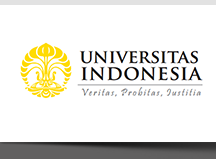Abstract
This study aims to analyze the influence of political institutional quality, proxied by democracy, political globalization, and good governance, on PM2.5 concentration in G20 countries as well as prove the Environmental Kuznets Curve (EKC) Hypothesis and Pollution Halo Hypothesis (PHH) from 1998 to 2022. The Autoregressive Distributed Lag (ARDL) method is employed in this analysis. The results show that democracy reduces PM2.5 concentration only in the long run. However, good governance decreases PM2.5 concentration in the short term but increases it in the long run. Political globalization shows no significant influence on PM2.5 concentration. Furthermore, the study also revealed that the EKC hypothesis is proven, but the PHH is not proven.
Bahasa Abstract
Penelitian ini bertujuan untuk menganalisis pengaruh kualitas institusi politik yang diproksi dari demokrasi, globalisasi politik, dan good governance terhadap konsentrasi PM2.5 di negara G20, serta membuktikan hipotesis Environmental Kuznets Curve (EKC) dan Pollution Halo Hypothesis (PHH) dari tahun 1998–2022. Autoregressive Distributed Lag (ARDL) merupakan metode analisis penelitian ini. Hasil penelitian menunjukkan bahwa demokrasi dapat menurunkan konsentrasi PM2.5 hanya pada jangka panjang. Namun, good governance menurunkan konsentrasi PM2.5 pada jangka pendek dan meningkatkannya pada jangka panjang. Globalisasi politik menunjukkan tidak adanya pengaruh terhadap konsentrasi PM2.5. Lebih lanjut, penelitian ini juga menunjukkan bahwa hipotesis EKC terbukti pada jangka panjang, tetapi PHH tidak terbukti, baik jangka panjang maupun pendek.
References
[1] Abbass, K., Song, H., Mushtaq, Z., & Khan, F. (2022). Does technology innovation matter for environmental pollution? Testing the pollution halo/haven hypothesis for Asian countries. Environmental Science and Pollution Research, 29(59), 89753-89771. doi: https://doi.org/10.1007/s11356- 022-21929-w.
[2] Abid, A., Mehmood, U., Tariq, S., & Haq, Z. U. (2022). The effect of technological innovation, FDI, and financial development on CO2 emission: Evidence from the G8 countries. Environmental Science and Pollution Research, 29, 11654–11662. doi: https://doi.org/10.1007/s11356-021-15993-x.
[3] Adams, S., & Acheampong, A. O. (2019). Reducing carbon emissions: The role of renewable energy and democracy. Journal of Cleaner Production, 240, 118245. doi: https:// doi.org/10.1016/j.jclepro.2019.118245.
[4] Ahmed, Z., Caglar, A. E., & Murshed, M. (2022). A path towards environmental sustainability: The role of clean energy and democracy in ecological footprint of Pakistan. Journal of Cleaner Production, 358, 132007. doi: https://doi.org/10.1016/j.jclepro.2022.132007.
[5] Ali, W., Rahman, I. U., Zahid, M., Khan, M. A., & Kumail, T. (2020). Do technology and structural changes favour environment in Malaysia: An ARDLbased evidence for environmental Kuznets curve. Environment, Development and Sustainability, 22, 7927-7950. doi: https://doi.org/10.1007/s10668-019-00554-7.
[6] Ansari, M. A., Khan, N. A., & Ganaie, A. A. (2019). Does foreign direct investment impede environmental quality in Asian countries? A panel data analysis. OPEC Energy Review, 43(2), 109-135. doi: https://doi.org/10.1111/opec.12144.
[7] Atmospheric Composition Analysis Group. (2023). SatPM2.5 (Satellite-derived PM2.5). Washington University in St. Louis. Diakses 14 April 2024 dari https://sites.wustl.edu/acag/datasets/surface-pm2-5/#V5.GL.03.
[8] Badan Meteorologi, Klimatologi, dan Geofisika. (2023). Konsentrasi partikulat (PM2.5): Informasi kualitas udara konsentrasi partikulat (PM2.5) di seluruh wilayah Indonesia. Diakses 20 April 2024 dari https://www.bmkg.go.id/kualitas-udara/informasi-partikulat-pm25.bmkg.
[9] Bell, M. L., Dominici, F., Ebisu, K., Zeger, S. L., & Samet, J. M. (2007). Spatial and temporal variation in PM2.5 chemical composition in the United States for health effects studies. Environmental Health Perspectives, 115(7), 989-995. doi: https://doi.org/10.1289/ehp.9621.
[10] Churchill, S. A., Pan, L., & Paramati, S. R. (2022). Air pollution and tourism: Evidence from G20 countries. Journal of Travel Research, 61(2), 223-234. doi: https://doi.org/10.1177/0047287520977724.
[11] Coppedge, M., Gerring, J., Glynn, A., Knutsen, C. H., Lindberg, S. I., Pemstein, D., ... & Altman, D. (2020). Varieties of democracy: Measuring two centuries of political change. Cambridge University Press.
[12] Dauda, L., Long, X., Mensah, C. N., & Salman, M. (2019). The effects of economic growth and innovation on CO2 emissions in different regions. Environmental Science and Pollution Research, 26, 15028-15038. doi: https://doi.org/10.1007/s11356-019-04891-y.
[13] Dinda, S. (2004). Environmental Kuznets curve hypothesis: A survey. Ecological Economics, 49(4), 431-455. doi: https://doi.org/10.1016/j.ecolecon.2004.02.011.
[14] Dong, K., Sun, R., Dong, C., Li, H., Zeng, X., & Ni, G. (2018). Environmental Kuznets curve for PM2.5 emissions in Beijing, China: What role can natural gas consumption play?. Ecological Indicators, 93, 591-601. doi: https://doi.org/10.1016/j.ecolind.2018.05.045.
[15] Dreher, A. (2006). Does globalization affect growth? Evidence from a new index of globalization. Applied Economics, 38(10), 1091-1110. doi: https://doi.org/10.1080/00036840500392078.
[16] Espoir, D. K., Sunge, R., & Bannor, F. (2023). Exploring the dynamic effect of economic growth on carbon dioxide emissions in Africa: Evidence from panel PMG estimator. Environmental Science and Pollution Research, 30(52), 112959-112976. doi: https://doi.org/10.1007/s11356-023-30108-4.
[17] Evans, O., & Mesagan, E. P. (2022). ICT-trade and pollution in Africa: Do governance and regulation matter?. Journal of Policy Modeling, 44(3), 511-531. doi: https://doi.org/10.1016/j.jpolmod.2022.06.003.
[18] Farzanegan, M. R., & Markwardt, G. (2018). Development and pollution in the Middle East and North Africa: Democracy matters. Journal of Policy Modeling, 40(2), 350-374. doi: https://doi.org/10.1016/j.jpolmod.2018.01.010.
[19] Feng, Y., Sabir, S. A., Quddus, A., Wang, J., & Abbas, S. (2024). Do the grey clouds of geopolitical risk and political globalization exacerbate environmental degradation? Evidence from resourcerich countries. Resources Policy, 89, 104533. doi: https://doi.org/10.1016/j.resourpol.2023.104533.
[20] G20 India. 2023. G20 - background brief. Diakses 19 Maret 2024 dari https://www.g20.in/en/docs/2022/G20_ Background_Brief.pdf.
[21] GBD. (2024). GBD results. Global Burden of Disease - Institute for Health Metrics and Evaluation, University ofWashington. Diakses 2 Mei 2024 dari https://vizhub.healthdata.org/gbd-results/.
[22] Gujarati, D. N., & Porter, D. C. 2009. Basic econometrics (5th edition). McGraw-Hill/Irwin.
[23] Gupta, M., Saini, S., & Sahoo, M. (2022). Determinants of ecological footprint and PM2.5: Role of urbanization, natural resources and technological innovation. Environmental Challenges, 7, 100467. doi: https://doi.org/10.1016/j.envc.2022.100467.
[24] Gyamfi, B. A., Adedoyin, F. F., Bein, M. A., & Bekun, F. V. (2021). Environmental implications of N-shaped environmental Kuznets curve for E7 countries. Environmental Science and Pollution Research, 28, 33072-33082. doi: https://doi.org/10.1007/s11356-021-12967-x.
[25] Haseeb, A., Xia, E., Danish, Baloch, M. A., & Abbas, K. (2018). Financial development, globalization, and CO2 emission in the presence of EKC: Evidence from BRICS countries. Environmental Science and Pollution Research, 25, 31283-31296. doi: https://doi.org/10.1007/s11356-018-3034-7.
[26] Haseeb, M., & Azam, M. (2021). Dynamic nexus among tourism, corruption, democracy and environmental degradation: A panel data investigation. Environment, Development and Sustainability, 23(4), 5557-5575. doi: https://doi.org/10.1007/s10668-020-00832-9.
[27] Haug, A. A., & Ucal, M. (2019). The role of trade and FDI for CO2 emissions in Turkey: Nonlinear relationships. Energy Economics, 81, 297-307. doi: https://doi.org/10.1016/j.eneco.2019.04.006.
[28] Health Effects Institute. (2020). State of global air 2020: A special report on global exposure to air pollution and its health impacts. Special report. Health Effects Institute and the Institute for Health Metrics and Evaluation’s Global Burden of Disease. Diakses 3 Maret 2024 dari https://www.stateofglobalair.org/resources/archived/state-global-air-report-2020#:~:text=The%20State%20of%20Global%20Air%202020%20reports%20on%20the%20first,their%20first%20month%20of%20life.
[29] Im, K. S., Pesaran, M. H., & Shin, Y. (2003). Testing for unit roots in heterogeneous panels. Journal of Econometrics, 115(1), 53-74. doi: https://doi.org/10.1016/S0304-4076(03)00092-7.
[30] IQAir. (2022, 22 September). Does air pollution cause climate change?. Diakses 15 Februari 2024 dari https://www.iqair.com/newsroom/ does-air-pollution-cause-climate-change.
[31] Iqbal, A., Tang, X., & Rasool, S. F. (2023). Investigating the nexus between CO2 emissions, renewable energy consumption, FDI, exports and economic growth: Evidence from BRICS countries. Environment, Development and Sustainability, 25(3), 2234-2263. doi: https://doi.org/10.1007/s10668-022-02128-6.
[32] Jahanger, A., Usman, M., & Balsalobre-Lorente, D. (2022). Autocracy, democracy, globalization, and environmental pollution in developing world: Fresh evidence from STIRPAT model. Journal of Public Affairs, 22(4), e2753. doi: https://doi.org/10.1002/pa.2753.
[33] Kao, C. (1999). Spurious regression and residual-based tests for cointegration in panel data. Journal of Econometrics, 90(1), 1-44. doi: https://doi.org/10.1016/S0304-4076(98)00023-2.
[34] Kisswani, K. M., & Zaitouni, M. (2023). Does FDI affect environmental degradation? Examining pollution haven and pollution halo hypotheses using ARDL modelling. Journal of the Asia Pacific Economy, 28(4), 1406-1432. doi: https://doi.org/10.1080/13547860.2021.1949086.
[35] Lane, D. M., Scott, D., Hebl, M., Guerra, R., Osherson, D.,& Zimmer, H. (2003). Introduction to statistics. Diakses 7 April 2024 dari https://onlinestatbook.com/Online_Statistics_ Education.pdf.
[36] Langnel, Z., & Amegavi, G. B. (2020). Globalization, electricity consumption and ecological footprint: An autoregressive distributive lag (ARDL) approach. Sustainable Cities and Society, 63, 102482. doi: https://doi.org/10.1016/j.scs.2020.102482.
[37] Liu, X., Latif, K., Latif, Z., & Li, N. (2020). Relationship between economic growth and CO2 emissions: Does governance matter?. Environmental Science and Pollution Research, 27, 17221-17228. doi: https://doi.org/10.1007/s11356-020-08142-3.
[38] Mar’I, M., Seraj, M., & Tursoy, T. (2023). The role of fiscal policy in G20 countries in the context of the environmental Kuznets curve hypothesis. Energies, 16(5), 2215. doi: https://doi.org/10.3390/en16052215.
[39] Murray, C. J., Aravkin, A. Y., Zheng, P., Abbafati, C., Abbas, K. M., Abbasi-Kangevari, M., ... & Borzouei, S. (2020). Global burden of 87 risk factors in 204 countries and territories, 1990–2019: A systematic analysis for the Global Burden of Disease Study 2019. The Lancet, 396(10258), 1223-1249. doi: https://doi.org/10.1016/S0140-6736(20)30752-2.
[40] Nansai, K., Tohno, S., Chatani, S., Kanemoto, K., Kagawa, S., Kondo, Y., ... & Lenzen, M. (2021). Consumption in the G20 nations causes particulate air pollution resulting in two million premature deaths annually. Nature Communications, 12(1), 6286. doi: https://doi.org/10.1038/s41467-021-26348-y.
[41] Pesaran, M. H., Shin, Y., & Smith, R. P. (1999). Pooled mean group estimation of dynamic heterogeneous panels. Journal of the American Statistical Association, 94(446), 621- 634. doi: https://doi.org/10.1080/01621459.1999.10474156.
[42] Phong, L. H. (2019). Globalization, financial development, and environmental degradation in the presence of environmental Kuznets curve: Evidence from ASEAN-5 countries. International Journal of Energy Economics and Policy, 9(2), 40-50. doi: https://doi.org/10.32479/ijeep.7290.
[43] Qiao, H., Zheng, F., Jiang, H., & Dong, K. (2019). The greenhouse effect of the agriculture-economic growthrenewable energy nexus: Evidence from G20 countries. Science of the Total Environment, 671, 722-731. doi: https://doi.org/10.1016/j.scitotenv.2019.03.336.
[44] Robbins, P. (2011). Political ecology: A critical introduction (2nd edition). John Wiley & Sons.
[45] Sahu, N. C., & Kumar, P. (2020). Impact of globalization, financial development, energy consumption, and economic growth on CO2 emissions in India: Evidence from ARDL approach. Journal of Economics Business and Management, 8(3), 257-270. doi: 10.18178/joebm.2020.8.3.644.
[46] Solarin, S. A., & Al-Mulali, U. (2018). Influence of foreign direct investment on indicators of environmental degradation. Environmental Science and Pollution Research, 25, 24845-24859. doi: https://doi.org/10.1007/s11356-018-2562-5.
[47] Solaymani, S., & Montes, O. (2024). The role of financial development and good governance in economic growth and environmental sustainability. Energy Nexus, 13, 100268. doi: https://doi.org/10.1016/j.nexus.2023.100268.
[48] Tabash, M. I., Farooq, U., El Refae, G. A., & Belarbi, A. (2023). Tackling the ecological footprints of foreign direct investment and energy dependency through governance: Empirical evidence from GCC region. Quality & Quantity, 57(5), 4435-4454. doi: https://doi.org/10.1007/s11135-022- 01534-2.
[49] Voumik, L. C., & Ridwan, M. (2023). Impact of FDI, industrialization, and education on the environment in Argentina: ARDL approach. Heliyon, 9(1), e12872. doi: https://doi.org/10.1016/j.heliyon.2023.e12872.
[50] US EPA. (2023). Health and environmental effects of Particulate Matter (PM). United States Environmental Protection Agency. Diakses 29 Januari 2024 dari https://www.epa.gov/pm-pollution/health-and-environmental-effects-particulate-matter-pm.
[51] Wang, N., Zhu, H., Guo, Y., & Peng, C. (2018). The heterogeneous effect of democracy, political globalization, and urbanization on PM2.5 concentrations in G20 countries: Evidence from panel quantile regression. Journal of Cleaner Production, 194, 54-68. doi: https://doi.org/10.1016/j.jclepro.2018.05.092.
[52] Wen, Y., Song, P., Yang, D., & Gao, C. (2022). Does governance impact on the financial development-carbon dioxide emissions nexus in G20 countries. PLoS ONE, 17(8), e0273546. doi: https://doi.org/10.1371/journal.pone.0273546.
[53] WHO. (2006). WHO Air quality guidelines for particulate matter, ozone, nitrogen dioxide and sulfur dioxide: Global update 2005: Summary of risk assessment. World Health Organization. Diakses 1 Februari 2024 dari https://iris.who.int/handle/10665/69477.
[54] WHO. (2021). 2021 WHO health and climate change global survey report.World Health Organization. Diakses 15 April 2024 dari https://www.who.int/data/gho/data/themes/ topics/2021-who-health-and-climate-change-survey.
[55] World Bank. (2022). The global health cost of PM2.5 air pollution: A case for action beyond 2021. International Development in Focus. doi: 10.1596/978-1-4648-1816-5.
[56] Xu, Z., Baloch, M. A., Danish, K., Meng, F., Zhang, J., & Mahmood, Z. (2018). Nexus between financial development and CO2 emissions in Saudi Arabia: Analyzing the role of globalization. Environmental Science and Pollution Research, 25, 28378-28390. doi: https://doi.org/10.1007/s11356-018-2876-3.
[57] Yan, K., Gupta, R., & Wong, V. (2022). CO2 emissions in G20 nations through the three-sector model. Journal of Risk and Financial Management, 15(9), 394. doi: https://doi.org/10.3390/jrfm15090394.
[58] Yilanci, V., Cutcu, I., Cayir, B., & Saglam, M. S. (2023). Pollution haven or pollution halo in the fishing footprint: Evidence from Indonesia. Marine Pollution Bulletin, 188, 114626. doi: https:// doi.org/10.1016/j.marpolbul.2023.114626.
[59] Zandi, G., Haseeb, M., & Zainal Abidin, I. S. (2019). The impact of democracy, corruption and military expenditure on environmental degradation: Evidence from top six Asean countries. Humanities & Social Sciences Reviews, 7(4), 333-340. doi: https://doi.org/10.18510/hssr.2019.7443.
[60] Zhang, R., Wang, G., Guo, S., Zamora, M. L., Ying, Q., Lin, Y., ... & Wang, Y. (2015). Formation of urban fine particulate matter. Chemical Reviews, 115(10), 3803-3855. doi: https://doi.org/10.1021/acs.chemrev.5b00067.
[61] Zhu, H., Duan, L., Guo, Y., & Yu, K. (2016). The effects of FDI, economic growth and energy consumption on carbon emissions in ASEAN-5: Evidence from panel quantile regression. Economic Modelling, 58, 237-248. doi: https://doi.org/10.1016/j.econmod.2016.05.003.
Recommended Citation
Pratama, Afif Dhia and Rahmayani, Dwi
(2025)
"Analisis Pengaruh Kualitas Institusi Politik terhadap Konsentrasi PM2.5 di Negara G20,"
Jurnal Ekonomi dan Pembangunan Indonesia: Vol. 25:
No.
1, Article 2.
DOI: 10.7454/jepi.v25i1.1640
pp.16-37
Available at:
https://scholarhub.ui.ac.id/jepi/vol25/iss1/2







